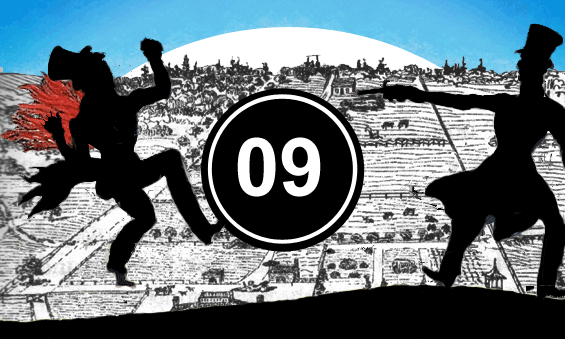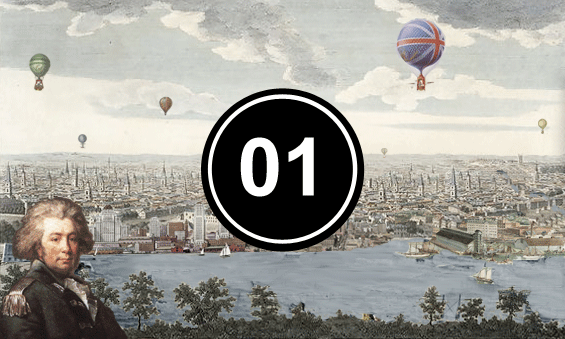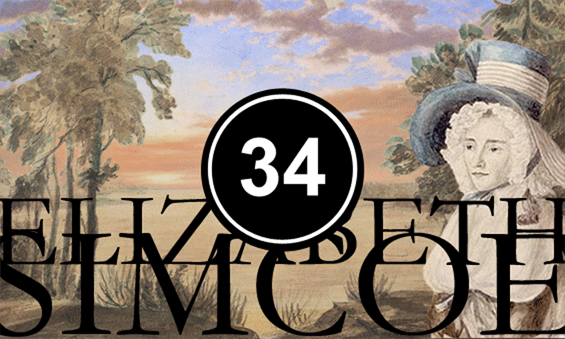UK TOUR DAY THIRTEEN (LONDON): I returned to London for the last few days of the Toronto Dreams Project's UK Tour. And on my first day back, I headed to this spot on The Strand. It's in the middle of the city, on the edge of the financial district, just a few blocks from Trafalgar Square, right around the bend of the Thames from the Westminster. I came here because in the very late 1700s and very early 1800s, this place was home to the Crown & Anchor tavern, a hotbed for radical politics with a special connection to one of the most conservative families from the early history of Toronto.
So it was in England that William probably met Hannah for the first time (although they were both from important Connecticut families, so it could have been earlier). And it was here that they got married. The ceremony was held at a church just a few blocks from Buckingham Palace: St. George's Hanover Square (the exact same spot where, a century later, Sir John A. Macdonald would marry his second wife while he was in town negotiating Confederation).
 |
| St. George's Hanover Square |
But that wasn't the only new job Jarvis was going to have in the new province. And that's where the Crown & Anchor tavern comes in.
In the late 1700s and early 1800s, the Crown & Anchor was one of the most important taverns in all of England. Some of the biggest names in Britain came here to drink and to argue, to hold meetings and give lectures: people like Samuel Taylor Coleridge, Samuel Johnson, William Godwin, Thomas Hardy and William Hazlitt. The tavern was especially famous as a hotbed for left-wing politics. It became an icon of its time, synonymous with the Radicals and Reformers who were fighting to make England more democratic. Many of them were being thrown into prison for their ideas, some charged with treason and locked away in the Tower of London. At the Crown & Anchor, hundreds and sometimes even thousands of them gathered in the elegant and spacious rooms, listening to speakers, holding meetings, or throwing a party when someone was finally released from jail. They used the tavern to print pamphlets and radical texts like Thomas Paine's Rights of Man, a defense of the French Revolution. They were also ardent supporters of the American Revolution. In other words, they were the ideological opposites of William Jarvis.
But there was lots of space at the Crown & Anchor. Not everyone who held a meeting there was a radical. Far from it. And in the very late 1700s, the tavern was home to a series of meetings by the most famous secret organization in the world: The Freemasons.
A new province in Canada meant a new Grand Lodge. And the Freemasons in London just happened to have a brand new member who was going to be living there. William Jarvis had been inducted into the organization just a month earlier. So, at one of their meetings at the Crown & Anchor, they chose him to be the very first Provincial Grand Master of the Provincial Grand Lodge of Upper Canada.
Of course, the famous Masonic secrecy means that we can't be entirely sure what kind of a Grand Master Jarvis was. But he also played a much more public role as a prominent member of another anti-democratic, conservative-minded group trying to concentrate power in the hands of a few well-connected members: The Family Compact. Over the course of Toronto's first few decades, just a few Loyalist Tory families — the Jarvises among them — managed to keep most of the power in the new province to themselves, cracking down on anyone who argued in favour of democratic reform.
 |
| William Jarvis & Samuel Jarvis, ROM |
The Jarvis family doesn't seem to have gotten along very well with Toronto's other founders, either. William once tried to challenge four men to a duel all at the same time; Hannah called the rest of the city's ruling class "a lot of Pimps, Sycophants and Lyars." When one of their slaves escaped, the man wrote a letter to Jarvis explaining why: "your wife vexed me to so high a degree that it was far beyond the power of man to support it..."
One of their sons, Samuel Jarvis, would end up inheriting their confrontational attitude. As a young man, he infamously killed a teenager in a duel under suspicious circumstances — probably over gambling debts. And as a member of the Family Compact, he became one of the arch-enemies of William Lyon Mackenzie. The rebel mayor's politics had been deeply influenced by the American Revolution and those same Crown & Anchor reformers; he'd even met at least one of them during a trip to England and used his own Torontonian newspaper to print the writings of Thomas Paine, just like they'd done in London. He drove the Jarvis family nuts. In fact, it was Mackenzie who came up with the "Family Compact" nickname.
Once, when Mackenzie called Samuel Jarvis a murderer for killing the man in the duel, the young Jarvis struck back. In a bizarre echo of the Patriot attacks that had terrorized his own family in the United States, he organized an angry mob, dressed them up in a parody of First Nations clothing, and attacked Mackenzie's home and business while he was out of town. His family was there, though; they hid in fear while the rioters destroyed Mackenzie's printing press and threw the type into Lake Ontario. We call it The Type Riot.
It backfired. Mackenzie sued and got a big settlement, enough to expand his newspaper business. Now, his radical politics had an even bigger voice: within a few short years, he'd become the first mayor of Toronto and led a rebellion against British rule. On the day he marched his army down Yonge Street, the Jarvis family were there again, taking up arms just like they'd done in the United States 60 years earlier. In fact, it was a ragtag force led by their cousin — Sheriff William Botsford Jarvis — who turned Mackenzie's rebels away.
But the days of the Family Compact were numbered. True democracy was going to come to Canada anyway. And despite having to spend years in exile, Mackenzie would be a leading voice in Canadian politics for decades to come. In a weird twist, thanks to the Type Riot, it was the conservative Jarvis family who had helped to make it happen.
 |
| A dream for Samuel Jarvis at St. George's Hanover Square |
 |
| Crown & Anchor, right, an empty construction lot now |
 |
| The Crown & Anchor |
 |
| Crown & Anchor, right, in a famous political cartoon |
 |
| Another political cartoon, inside the Crown & Anchor |
|
|
A version of this story will appear in The Toronto Book of the Dead Coming September 2017 Pre-order from Amazon, Indigo, or your favourite bookseller |
You can still see the gravestone of John Ridout — the teenager Samuel Jarvis killed in the duel — in the doorway of St. James Cathedral on King Street East.
|
| This post is related to dream 09 The Ghost of John Ridout Samuel Jarvis, 1826 |



























































